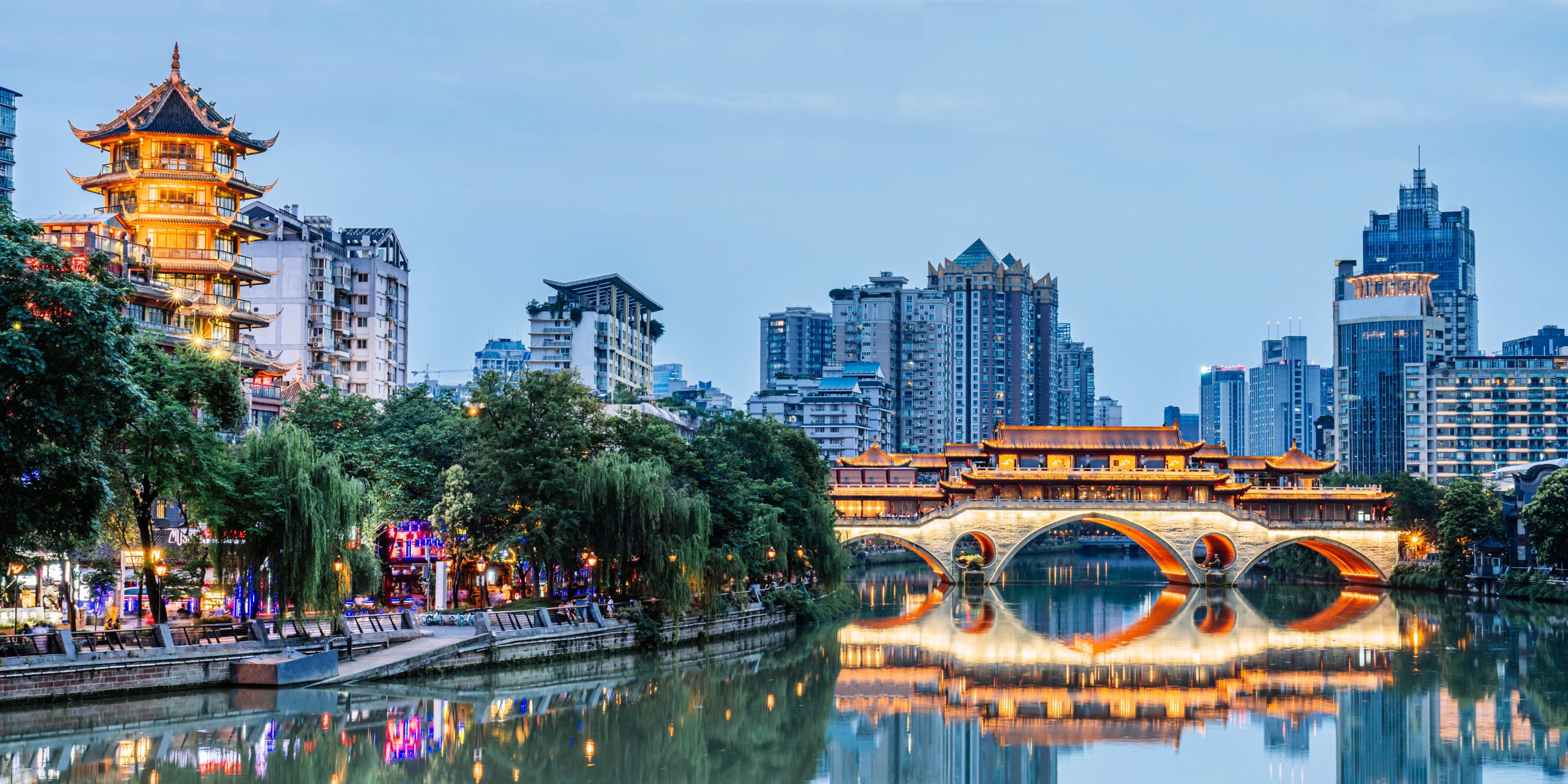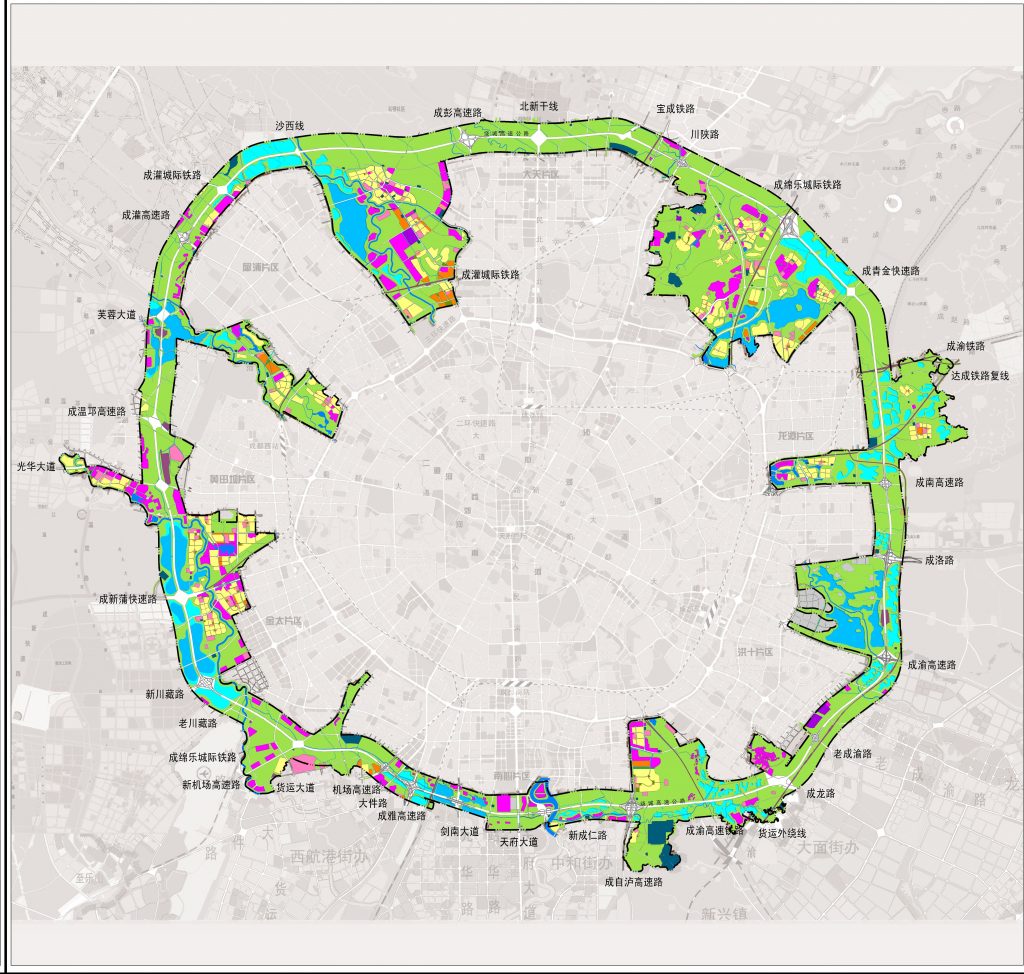News
Building cities with nature: the story of Chengdu

News | Oct 2021
Image: upcoming publication, Chengdu Report: Our future lies with nature
Chengdu - the capital city of Sichuan Province, in the central South Western China - is home to more than 20 million people and is a regional hub for the movement of goods, services and people. Chengdu is also taking a pioneering approach to placing nature at the heart of development.
In recent years, economic growth has allowed Chengdu to expand trade ties both domestically and internationally; the city now has a GDP equivalent to almost 267 billion USD. Such growth brings prosperity and opportunities, but also comes at a cost.
Changing priorities for Chengdu
Like many other large cities around the world, Chengdu faces issues of air and water pollution, traffic congestion, and an increasingly degraded natural environment.
Alongside economic growth, Chengdu’s residents have also been experiencing increased income and changing lifestyles. They are also increasingly paying attention to quality of life more broadly, including access to a healthy environment.
To tackle these challenges and meet residents’ increasing demand for healthy environment, Chengdu is pioneering investments in ecological or green infrastructure projects. This includes creating an ecological zone known as the ‘Green Belt’. The Green Belt, with a total area of nearly 188 km-2, covers land within 500 meters on both sides of the belt expressway, and the suburban lands between the seven new districts should be mainly used for protection and improvement of ecological environment in the central urban area.
These measures are intended to maximise the benefits of this green ring to the city and its residents.
Learning more about the benefits nature brings
With all this taking place at home, the Chengdu Municipal Government sought to understand how it can improve the project designs to address the city’s ecological, social and economic needs.
They also wanted to better understand how ecological development can contribute to some of urbanisation’s most pressing challenges.
Chengdu worked with UN-Habitat and UN Environment Programme World Conservation Monitoring Centre (UNEP-WCMC), under the umbrella of the Greener Cities Partnership to help address these questions.

3 steps to boost nature’s contribution in Chengdu
In 2017, experts from UN-Habitat and UNEP-WCMC were invited to visit four sites along Chengdu’s Green Belt. Following the visit, they made 3 key recommendations to the Chengdu Government:
1: Articulate Chengdu’s role in delivering national and international priorities
By understanding and developing a policy narrative around how Chengdu’s green projects and policies can contribute to local, national, and global goals, Chengdu can change its traditional development pathways and demonstrate the role that cities can play to benefit people and planet.
2: Develop a framework to measure and monitor the effectiveness of investment in nature.
Chengdu can develop a guiding framework for the city to regularly monitor how its investments into green infrastructure projects have been generating ecological, social and economic returns. Regularly monitoring results will provide strong support for Chengdu Municipal Government’s future planning within the Green Belt project, as well as generating evidence and incentives for maintaining long-term commitment and encouraging actions from the private sector.
3: Joint learning with other cities
The report’s third recommendation is for Chengdu to interact more actively with other cities and institutes internationally through relevant city networks and initiatives. This will help Chengdu to share experiences and lessons learned, and make Chengdu more visible internationally in terms of the city’s work and intentions in exploring sustainable futures. The visibility will provide Chengdu with greater opportunities to be supported by the world’s most innovative research and policy projects.
Cities for the future
Cities – through the way they use and invest in nature, within and around their administrative boundaries – can demonstrate international leadership, contributing to their countries’ commitments for achieving climate, biodiversity and Sustainable Development Goals.
Local governments have the power and potential to choose different development pathways, especially where they are still rapidly growing like Chengdu. Achieving this will need new approaches solutions, bringing together urban planners, climate scientists, ecologists, sociologists, environmental economists and more.
Such a change is not only desirable - it is also possible as more and more cities come to recognise the values of nature and their crucial role in protecting it.
The full report, Chengdu Report: Our future lies with nature, is a jointly produced by UN-Habitat and UNEP-WCMC and will be published shortly.
Have a query?
Contact us
communications@unep-wcmc.org
